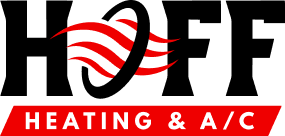Using UV Lights to Improve Winter Indoor Air Quality
It’s extremely important that we maintain a healthy level of indoor air quality (IAQ) in our home. In the winter, this becomes more important as we spend more time inside. Exposure to contaminants can cause issues like allergy symptoms, breathing problems, and spreading germs more frequently. UV lights are starting to be used in homes more frequently to help improve indoor air quality. Let’s look at how this technology works and why it’s beneficial for your O’Fallon, MO home. What Impacts Indoor Air Quality in Winter? In the summer months, it’s common for pollen and other outdoor contaminants to come inside and compromise a home’s indoor air quality. In the winter months, there are several issues to watch out for. Because of reduced ventilation and increased use of heating equipment, homeowners may experience too much or too little humidity, mold growth, a large prevalence of dust particles, and a high concentration of allergens like pet dander. Working with an experienced HVAC professional to address the individual concerns of your household can help bring your IAQ to a healthier level. This can be accomplished with the use of a whole-house purification unit, humidity-controlling equipment, and UV light technology. What Is UV...
View Article Read More
 Call Us Today
Call Us Today
